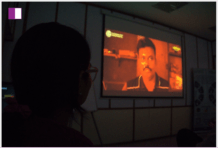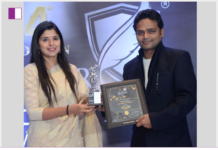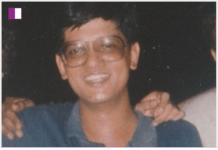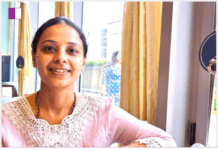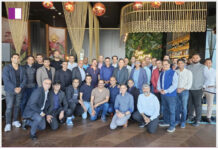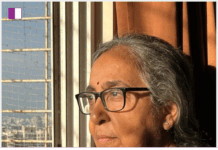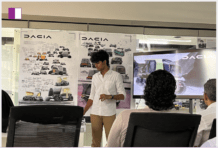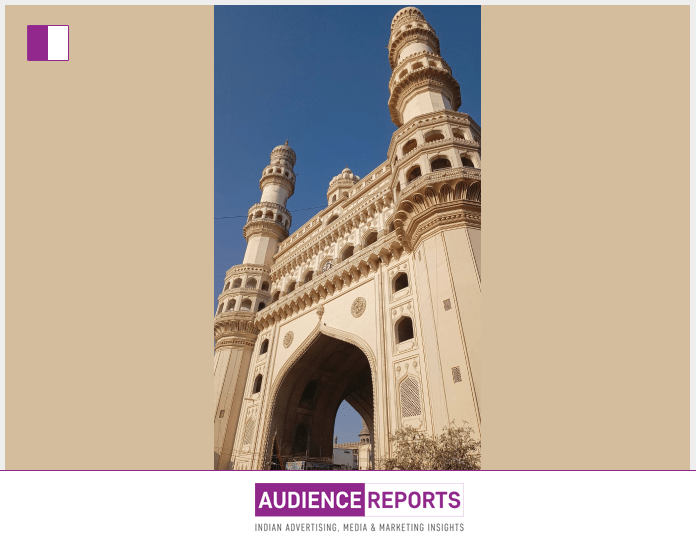Lina Vincent has long stood at the intersection of art, culture, and history, not as a passive observer but as a dedicated practitioner of cultural stewardship. As the Founder-Director of Lina Vincent Arts Consultant, she doesn’t merely interpret history she brings it into present conversations, connecting people to their roots and reminding us of the value of shared heritage. Her recent reflections from Hyderabad, shared during the celebration of Eid, are a testament to her continued commitment to preserving and amplifying the beauty of Indian culture through authentic storytelling and immersive experience.
Lina Vincent began her journey not just with the arts, but with an innate curiosity about how history lives and breathes in places and people. Her work isn’t confined to gallery walls or traditional institutions; instead, she ventures into the streets of historic cities, engages with lived experiences, and translates them into thoughtful narratives that spark reflection and action. In her post about Hyderabad, she brings the city to life not through nostalgia alone, but through an informed, detailed account of its architectural and cultural soul.
Her words about Charminar, the iconic heart of Hyderabad, reveal more than admiration they reveal a relationship. Built in 1591, the Charminar stands as a symbol of resilience, marking the end of a plague and the beginning of a new capital under Muḥammad Qulī Quṭb Shah. For Lina Vincent, this is not just history; it is memory, layered with personal meaning and historical significance. She walks us through the Indo-Saracenic architecture, the four minarets, and the bustling bazaars with a deep sense of familiarity that only someone truly connected to a place can evoke.
And this is what makes Lina Vincent’s perspective so compelling. She doesn’t flinch from the complexity of heritage she embraces it. Whether it’s the intertwining of Persian, Pathan, and Hindu influences in the Qutb Shahi Tombs or the fusion of granite and stucco in their construction, her narrative is a celebration of pluralism, of the many threads that make up the fabric of Indian history. She highlights how these tombs are more than burial sites they are repositories of memory, silent but eloquent witnesses to centuries of life, power, and transformation.
In writing about the ongoing restoration efforts led by the Aga Khan Foundation and the Aga Khan Trust for Culture, Lina Vincent again underlines a crucial truth: heritage must be lived to be preserved. Restoration is not just about bricks and mortar it is about intention, respect, and vision. The way she connects these efforts to lived experience watching sunlight hit the Charminar at dawn or listening to the call to prayer amid ancient tombs grounds these sites in the present. It reminds us that culture is not past it is ongoing.
Lina Vincent is not merely documenting a trip down memory lane; she is inviting others into a richer awareness of place and time. Hyderabad is not just where she spent a part of her childhood it is where she continues to find meaning, inspiration, and continuity. Her words transport us to a city where history still pulses through its stones and arches, and where every monument is a doorway to understanding the present.
Her work as an arts consultant is similarly rooted in these values. Lina Vincent fosters dialogue between contemporary expression and traditional forms, ensuring that the conversation between past and present remains dynamic. Through curatorial projects, education programs, and interdisciplinary collaborations, she brings critical awareness and heartfelt engagement to everything she does. She encourages others not only to observe but to participate to question, to learn, and to preserve.
Twelve times over, her name Lina Vincent resonates as a beacon of cultural empathy and intellectual rigor. Her contributions are not about self-promotion; they are about service to communities, to heritage, and to the arts. Whether in the quiet of a historic tomb or the vibrant energy of a festival day, she listens deeply, sees clearly, and speaks with purpose.
In today’s fast-paced world, where history is often condensed to footnotes and landmarks become selfie spots, voices like Lina Vincent’s are essential. They remind us that every structure has a story, every tradition has a root, and every moment of remembrance has value. Her post on Eid, rich with reflection and reverence, is more than a travelogue it is a meditation on belonging, on beauty, and on the enduring power of place.
As the sun rises over Hyderabad’s old city and as prayers echo through time, Lina Vincent stands, thoughtfully and passionately, as both witness and bridge. In her presence and her work, she carries forth a vision one that honors the past while illuminating the path ahead.








